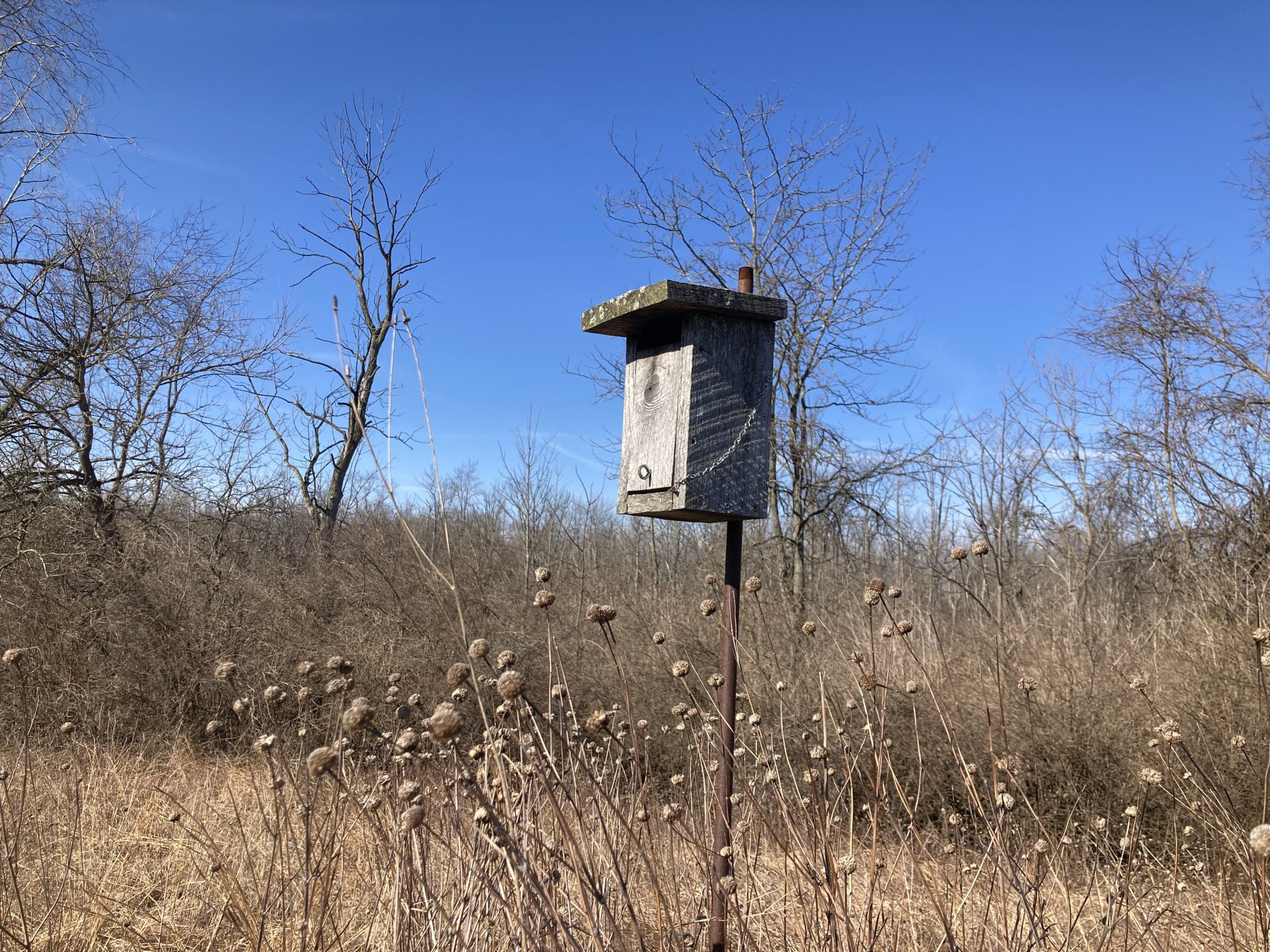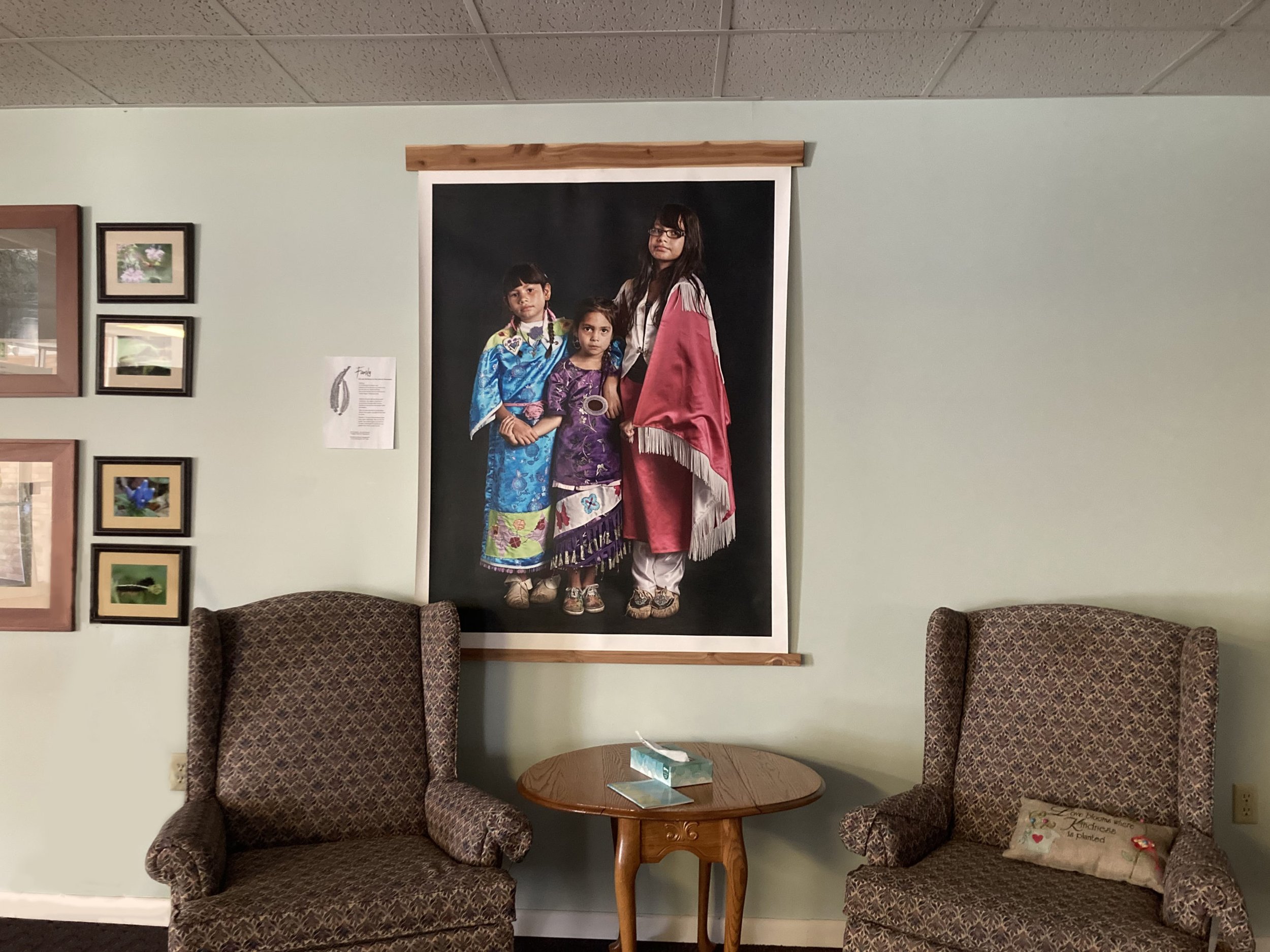29: Church Land: A Hidden History
USA
A Climate Pollinator story by Sierra Ross Richer
Members of Waterford Mennonite Church in Goshen, Indiana, USA, are baptized in a small pond behind the church that is home to beavers, fish and all kinds of insects.
The Waterford Wetland, a 55-acre area of undeveloped land along the Elkhart River, is a source of pride for the congregation.
Sunday School classes and small groups are invited to tromp through the forest to visit the river. And photographs of the insects, flowers and other critters that call the wetland home hang in the foyer as a reminder of the abundance of life it sustains.
Recently, a new piece of artwork was added to the display: a portrait of three Potawatomi dancers. The photograph, by Potawatomi artist Sharon Hoogstraten, is a call for the congregation to dig deeper into the story of the land.
A brief history of the land on the church’s website begins in the 1950s, when a previous owner dug a pond to raise fish. But what about before that?
Like most of the United States, the land owned by Waterford Mennonite Church was taken from the indigenous people who lived on it (in this case the Pokagon band of the Potawatomi) through treaties and forced relocation in the 17 and 1800s. Mennonite settlers didn’t usually participate directly in the removal of indigenous peoples, but they often moved in soon after, setting up homesteads in places like Goshen within the first decade of them being vacated.
“We’re living on Potawatomi land here and it was not taken in a just way from the people at all,” said Luke Gascho, a member of Waterford Mennonite Church who helped the church connect with The Coalition to Dismantle the Doctrine of Discovery. His question is: “So what does one do?”
The Coalition to Dismantle the Doctrine of Discovery is an organization that works with settler churches and institutions to uncover their history and work to restore relations with the land and the people it was stolen from.
It’s important for people to realize, Luke said, that the Doctrine of Discovery isn’t just a thing of the past. It continues to drive the exploitation, pollution and degradation of land today and systematically puts indigenous and marginalized peoples in places most at risk for environmental hazards.
Changing this doctrine is critical because it lies at the root of environmental destruction contributing to climate change.
At Waterford, a group of over 20 members has formed to work on this issue. They have drafted a land acknowledgement statement, held Sunday School classes on the book, The Land is Not Empty by Sarah Augustine, the executive director of The Coalition to Dismantle the Doctrine of Discovery, participated in learning opportunities, like a bike tour of Potawatomi and Miami sites in the area, and started conversations about where the church’s money is invested and the prospect of land-return.
There is no road map for dismantling the Doctrine of Discovery, Luke said. Physically bringing reminders of the land’s history into the church space in the form of Sharon Hoogstraten’s photograph is one step in the process of facing history and working to change it.
Learn More
Book The Land is Not Empty by Sarah Augustine
The Coalition to Dismantle the Doctrine of Discovery
Photos



